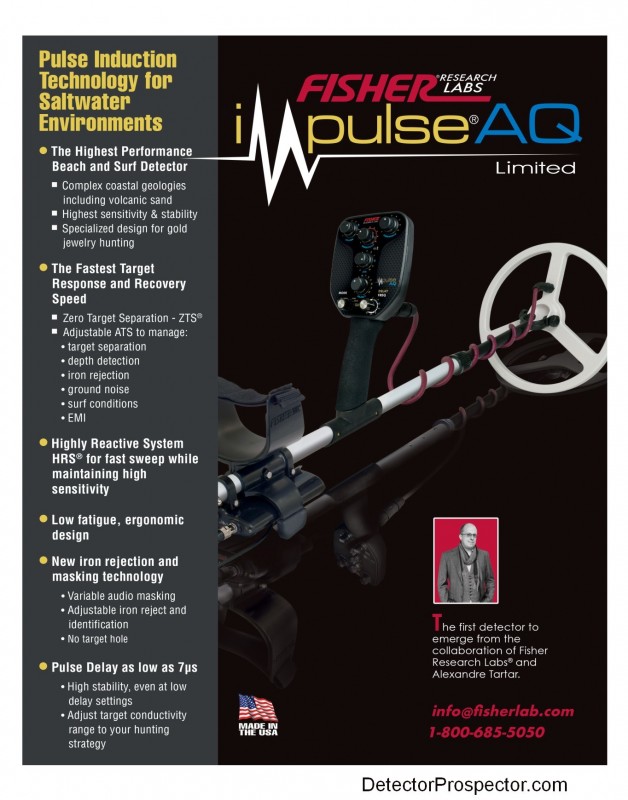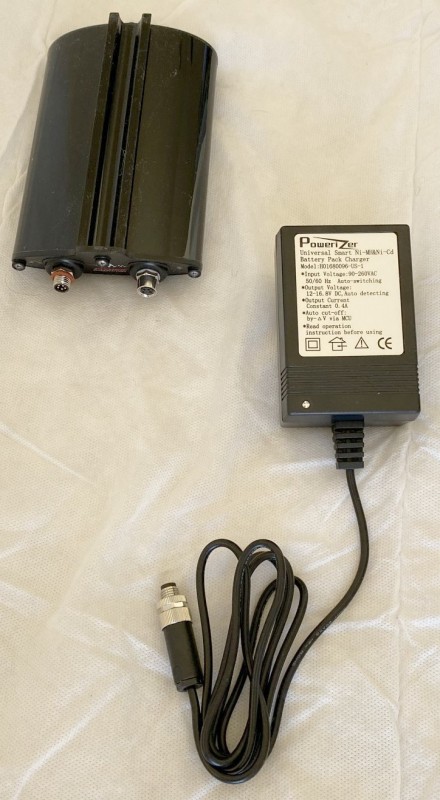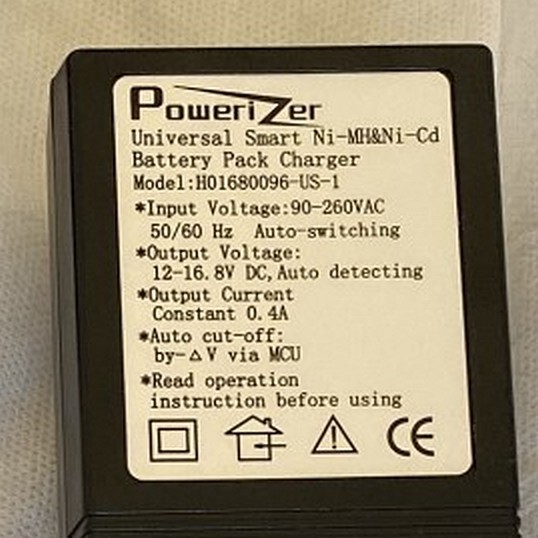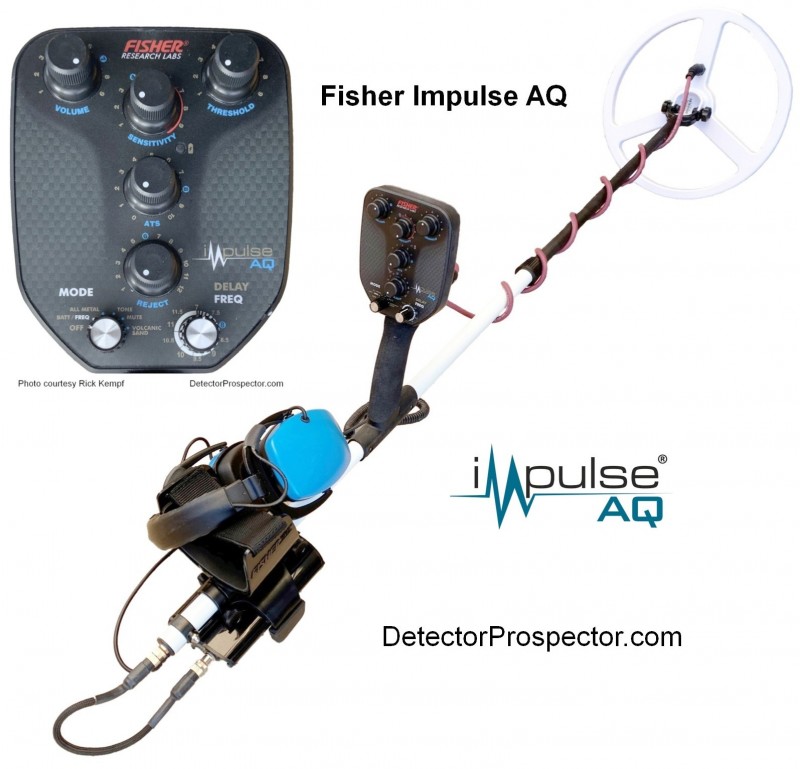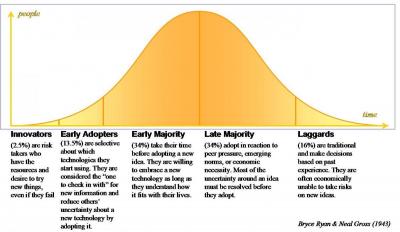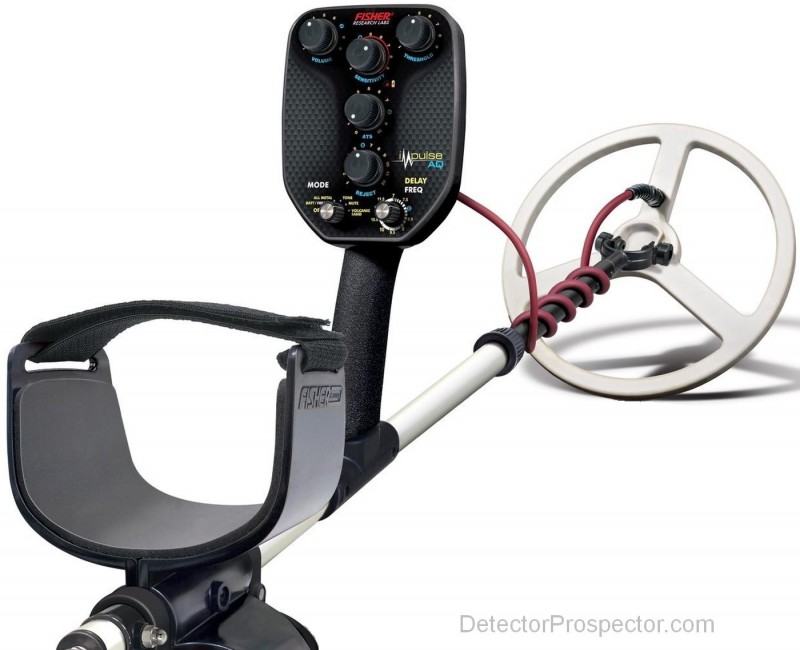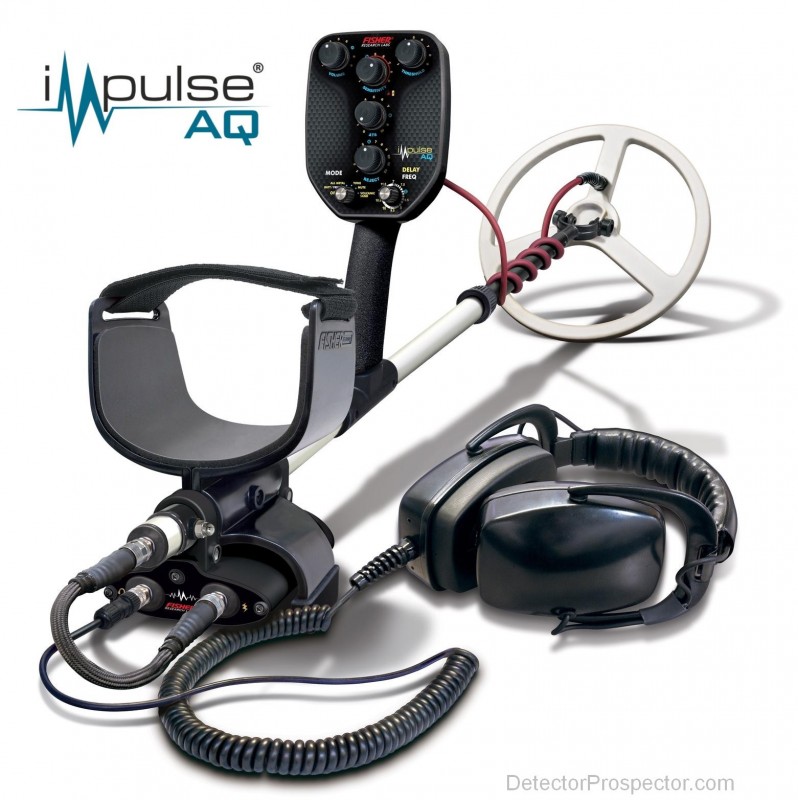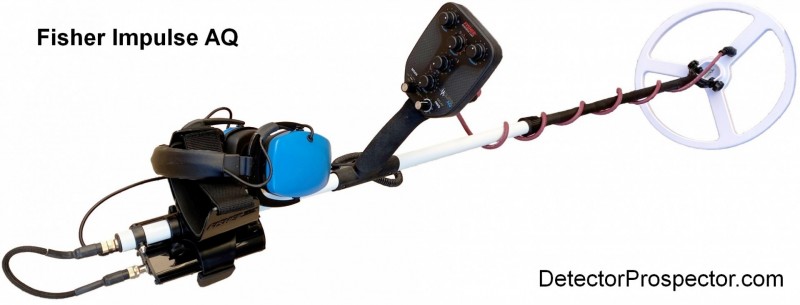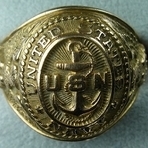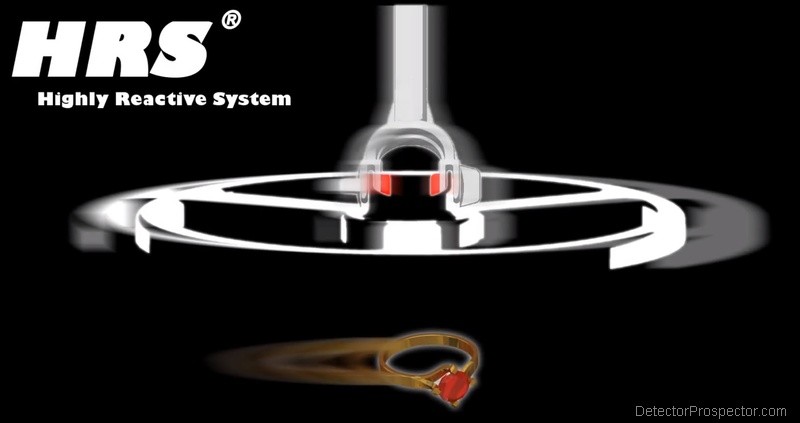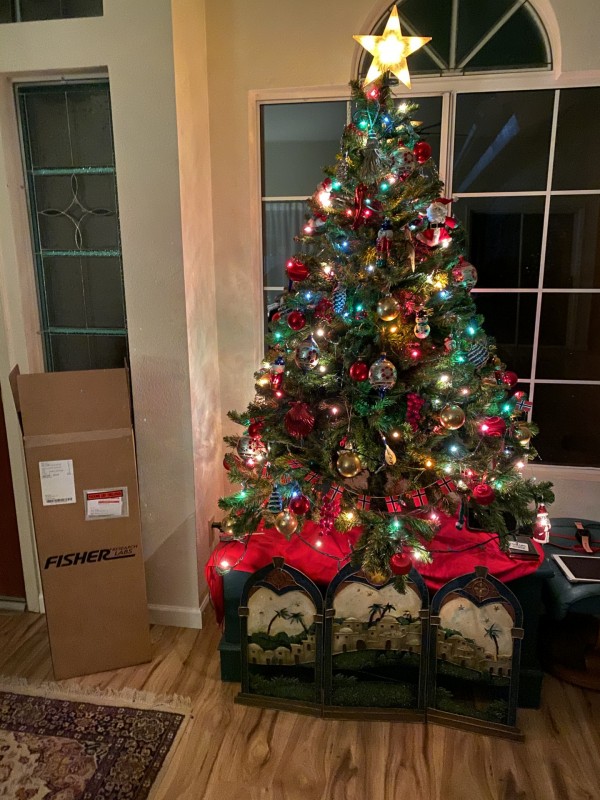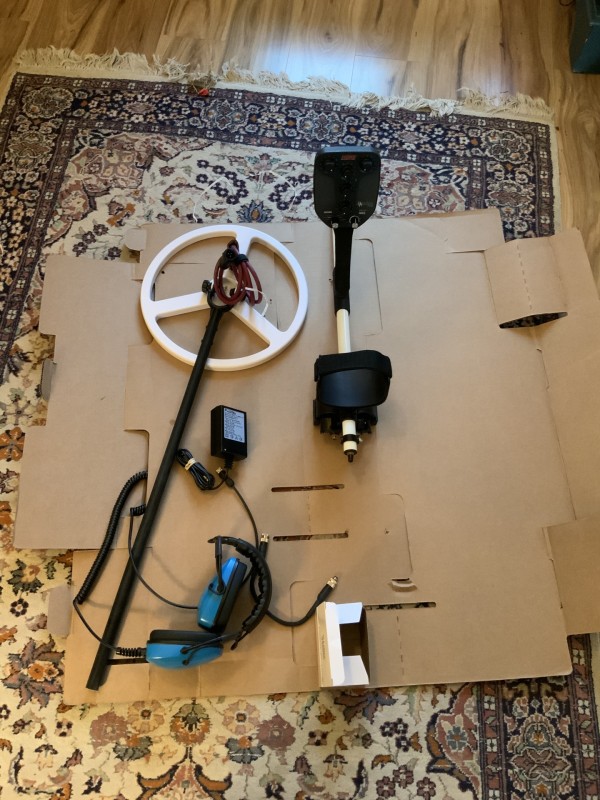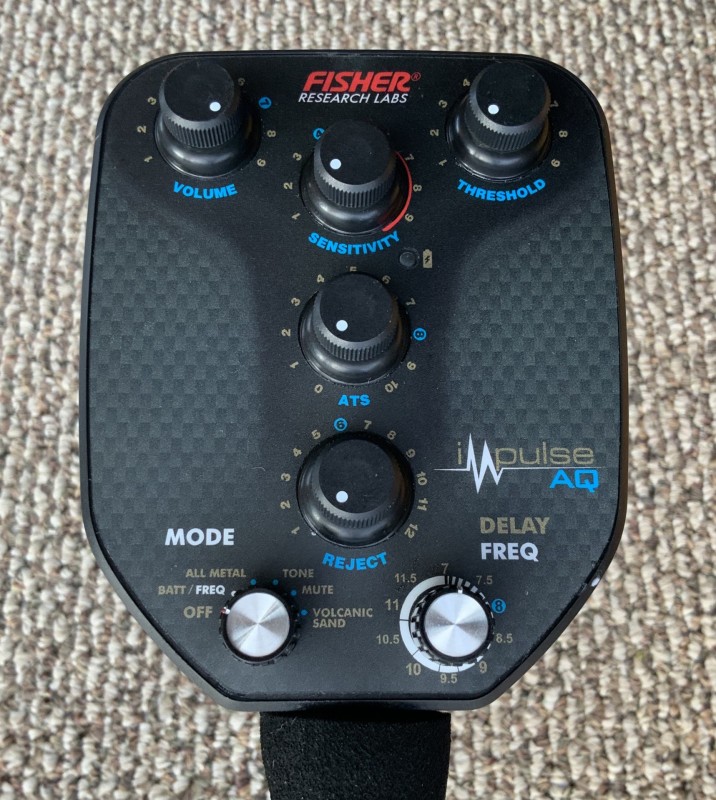Search the Community
Showing results for tags 'fisher impulse'.
-
Here is the battery and the charger spec. Anyone have suggestions for 12V field charging? The main problem is the connector. I could use an inverter to power this charger. Or cut the connector and install a splice/plug. And then use an appropriate 12V charger by switching the adapter cable over. Photo courtesy of Rick....
-
After some Disappointment regarding not been able to buy an AQ outside the US ,I'm going to buy a Whites TDI Beachhunter instead.I really wanted to buy one for a long time ago but waited and waited for the AQ to come to market.The problem is IF I know how much longer takes for the REAL improved unit to be released,I could wait,but God knows how long it takes.
-
For me personally, I get a gut feeling to wait and see. I know it will turn off a few of my followers, but I got turned off by all the delays and inconsistencies. Now with that said, I'm hoping FT realized the importance of "Getting it right" the 1st time. As we have seen most new products have been delayed some, but this one really stretched the moon cycle. I'm all about new products and enjoy getting my teeth wet (especially on gold nugget detectors), but as an inlander in Idaho, my water hunts are usually 2 to 4 times a yr taking a plane ride, so that does not give me the opportunity to test and compare it like I do on gold detectors (in my back yard). Cost - needs to be affordable or they will not sell many units. What is affordable? I'd say $1000 and no more than $1500. We have some nice options out there with all the different manufactures and some of the well built ones can do white a bit and only cost $900 (NOX-800). I realize it is not a PI, but Minelab priced the EQ so that many people would jump and boy I have sold hundreds of them. Depth - of only 3 feet is a big issue with me as most of my water hunting is fully submerged detector 8 to 10 hr days. I realize 3' is probably what the control box is at, but so many times I lay my detector down (some float and others sit on the bottom). I like hunting water 3 to 6' depth. The 3' threshold they are telling us, has my mind going - "potential issues". Why not the 10 feet so many others are using? Heck FT has 2 waterproof detectors they currently sell and both are 250'. Please Fisher give us 10'. Coil Size - 12.5 seems a little big considering they are pushing how it can find gold rings hidden among iron targets. Now I also realize 12.5" gice more depth too and since most other water detectors are 12" and under, then there is an advantage for depth, but not in iron trash? Built - Looking at the unit from Steve's pic (arm cuff and forward), all looks clean and doable. Looking at a full pic of detector and the back end gives me the chills. The 3 exposed connectors are potential issues, but it's what it is. I do like the idea of a lighter detector, not for me personally as in the water the weight is negated, but for those who walk the beaches, this is ideal. Iron DISC - This is probably one of the major points of this PI and I hope it does as well as we're being told. Volcanic Sand Setting - That feature alone (if you do not lose to much depth) will be a seller for some of my customers (Terry in Hawaii, are you listening). I just might have to come over this Fall (post CV-19) and do a hunt with you again Terry. I think some of my MX hunts could also become even more productive with this feature. Technology - Yes I really like to see new ideas, but this looks to be a spin off of a couple other smaller brand detectors. Nothing wrong with that at all, as long as they make it BETTER. I do give them kudos for trying something different as that is how things do eventually get better. We'll know pretty soon, but I am excited to hear of the folks who live on the beaches and their 1st reports. Where do I rank on your chart Steve, well not as high as many of you had hoped, but I will walk cautiously. Me personally it looks like I grade a "Late Majority" on this unit. But you know me, I might try and put a spin on it and see how well it works at finding low conductor gold nuggets in iron trashy tailings. Who knows, it might score me a few more nuggies? What would I like to see of this new detector? Mostly no major issues as I realize there will be a few. Overall customer satisfaction is "Above Average", just can't please everyone. And most importantly to see each of the different manufactures pushing the boundaries with good competition. If we only have 1 major manufacture doing detectors, then our options become limited. I sure loved those good old days where we could find multi gold/platinum ring on a trips. This new detector just might help make that happen again, we'll see. Hats off to Fisher for pushing and giving us another option of lighter more advanced PI with better Iron Discrimination.
-
Alexandre will redo ASAP the old video's he did on a French beach years ago, this time using a production version of the iMPULSE AQ LTD.(Yes, he has finally got a real one back from FTP😉) They were made in French and at best, in approximate English and commented in good English by Rick who published them on this forum and others. Look below. I am sure you know most of them. You will see how much the Impulse AQ LTD has progressed since the time these video's were made and published. These video should be considered just as examples of what the system is able to do, not polished marketing demo made by professionals. There could be a few depth and disc comparisons depending on availability of competitor beach units We expect many more coming from the early adopters. They will probably made with more professional expertise and material. MANTA in 2013: Impulse AQ prototype (still named AQUAMANTA) in end 2016 https://www.youtube.com/watch?v=ubQ8sMSADSE&t=0s Impulse AQ in early 2020
-
I'm in. I've been following the Manta / Impulse project since I first caught wind years ago. I'm curious how Fishers' "unconventional" marketing plan, that Rick referred to over on Tom's website ( http://www.dankowskidetectors.com/discussions/read.php?2,171347,page=2 ) , will be handled. Carl refers to a limited release as well. I hope I'm not left standing in the cold. UtahRich
-
Fisher Impulse AQ Data & Reviews Not everyone needs to wait for reports from others to decide they want a new detector. Me, I take a look at the specs, and if it appears to have what I want I get it and give it a spin. I'm jaded enough to know that any new detector will not be radically different than anything I have already used for years, and in that I am rarely disappointed. I'm mainly after better ergonomics that performs up to levels I am used to, that's all. I've been bitching for a detector like the Impulse AQ for years, and at 4.2 lbs and I assume in the right price ballpark I'm all in for getting one as soon as I can lay hands on one. As a buyer, not as a tester/reviewer. The Impulse AQ will be a radical improvement over my long departed 7 lb Garrett ATX. Is there anyone else with enough faith in this detector to buy one without needing a bunch of user reviews? I'm just curious who the innovators and early adopters out there might be?
-
With the exception of the battery cable sticking out the back I really like the look of this detector. And after swinging a 7 lb Garrett ATX this 4.2 lbs of well balanced detector is going to seem like a dream on my arm. I ditched both my ATX and my 7.2 lb Minelab GPZ 7000 a couple years ago in a fit of passive-aggressive protest over those heavy beasts, and swore not to buy another pulse machine until somebody made something more in line with the ergonomics I desired. The Impulse AQ tips the scales at a little over 4 lbs, but that is largely because of the 12" round coil. A smaller coil is a distinct possibility, as is the ability to belt mount the battery. That's the benefit of that funny looking battery cable arrangement - external batteries. In any case, good enough for me and a huge improvement of what I'm used to. The price remains to be seen, but it has a good chance at coming in under $2000, making the new Fisher Impulse AQ one of the best contenders so far in my Under 4 lb, Under $2K Challenge Fisher Impulse AQ Data & Reviews Fisher Impulse AQ discriminating pulse induction metal detector
-
HI guys! It feels very good that this nice forum is at high speed with all discussions about the AQ with all different subjects about the AQ.We are now in the middle of january and still nothing from the Fisher.No reports from any tester, no videos, no manual, nada...it feels kind of depressing without knowing any informations at all.I know that LE.JAG and Alexander can't say anything about these informations even though the know for sure.Is there any thought or any guesses about these questions?
-
The way to go Steve H, I also let it go, no AQ for me anymore they lost me as a client, looking into the Aussie detector QED even without service in the US, when having problems I just send the pot in for service to Down under land, only concern I have is it needs certain adjustment/tuning, for use in gold country in the US what I read. Steve H. Can you tell me what adjustment the QED needs to used in our gold country. I would appreciate any information on this, so I can ask the Aussie maker of the QED to make these ajustments. See this as my experiment for 2020 /2021, I also wouldn't mind to lend my QED as a test machine to you or any other experienced nuggett hunter for experiment testing. Just want to tell you that I am not a dealer or interested in selling any detectors to prevent any misunderstandings, wanted to do this pet project for a few years. Better do it now and don't want to postpone any pet projects, life is short and I don't know if the COVID19 virus gets me this year or next year! No waiting for me anymore, it' now or never!
-
Came across this video of the AQ, filmed late December . Audio isn't great.
-
Hello Guys, I'm new on this forum and like Alexandre Tartar, I live in north of France. I was a young prospector in the 90's and asked my father (electronic engineer with good knowledge in magnetic field theory) to build a PI to hunt the beaches. So we have made, in a few months, an home-made PI metal detector 25 years ago, based on the technology of the old White's Surfmaster PI (mono coil). I remember the use of FETs (Field Effects Transistors to make 200 volts pulses). It worked, but unfortunately, my father was afraid by a so powerful magnetic fields and has continued his research on VLF detectors, until today ! After this short presentation, here's my question : Is the Impulse AQ a bipolar detector ? Le Jag has explained us on the french forum "detecteur.net" this technology developped by Alexandre : Positive and Negative pulse are alternatively sent. The positive one light the gold ring but magnetize the soil. The negative one demagnetize the soil. What about it ?
-
I think the Garrett ATX challenges the AQ most and maybe TDIBH come close after ATX only in raw depth.I have myself an ATX and hunt my beach with it. Max sensitivity givs me around 15 inches for a normal coin size object.My Garrett sea hunter is absolutly no match and even my Equinox has no chance.The fair comparisson is ATX (PI , almost same coil size,waterproof ) I think the AQ has only one tone for both high and low conductive targets and one for iron.The ATX has one tone for high and one tone for low conductive targets but you have no tone for iron which makes one to digg all.
-
Many of you have expressed a desire to know how well the Impulse AQ will function for land use. One option is to wait until the unit is released. I know, no fun! The other option is to analyze the information we do have on the unit and on PIs in general, combined with information from the scientific literature and various forum posts. I have done such an analysis which is a bit long, but I will summarize the findings followed by how I arrived at the conclusions. The places where I believe the unit will be effective include the following: Black sand beaches (mainly coarse unweathered magnetite) Soils containing mildly weathered granite and other felsic igneous rocks (I know this appears to conflict with Alexandre’s post, but I will elaborate below) Unweathered or mildly weathered basic igneous rocks (basalt, gabbro, etc.) Places where I think the AQ will struggle include: Weathered basalt and soils derived from basalt Some fine-grained volcanic rocks such as rhyolite. The basis of my groupings above is the published magnetic susceptibilities (MS) for various minerals and rock types and on the concept of frequency dependent MS which is a very important consideration for PI detectors. MS is a measure of the magnetization of a material in response to an applied magnetic field. Frequency dependence is when the measured MS varies when different frequencies are used for the induced field. Minerals with high MS are responsible for the “mineralization” when speaking of metal detector performance. Three minerals are responsible for most “mineralization”; magnetite (Fe3O4), titanomagnetite, and maghemite (ꝩ-Fe2O3). The MS for these minerals are orders of magnitude higher than for other iron minerals such as hematite (α-Fe2O3), goethite, biotite, pyroxenes, etc. The relative proportions of these minerals within different rock types determines the MS of the rock. Ranges for different rock types are shown in the table below. Rock Type Magnetic Susceptibility Range (10-6 SI)1 Andesite 170,000 Basalt 250-180,000 Diabase 1,000-160,000 Diorite 630-130,000 Gabbro 1,000-90,000 Granite 0-50,000 Peridotite 96,000-200,000 Porphyry 250-210,000 Pyroxenite 130,000 Rhyolite 250-38,000 Igneous rocks 2,700-270,000 Average felsic igneous rocks 38-82,000 Average basic igneous rocks 550-120,000 Quartzite 4,400 Gneiss 0-25,000 Limestone 2-25,000 Sandstone 0-20,900 Shale 63-18,600 1. Compilation from Hunt et al. (1995) Minerals with high MS are responsible for the poor performance of VLF metal detectors. Hematite within soils is typically red, but given the relatively low MS, is not particularly problematic to metal detectors. So, red soil is not always bad! The MS of soil is a function of the parent rock from which it was formed (see table) and the degree of weathering of the iron minerals present. Soils formed from basic igneous or volcanic rocks such as basalt generally have higher MS than soils formed from felsic rocks (rhyolite, granite, etc.), but it depends on the specific rock. For example, some granites have low MS because they are dominated by ilmenite (S-type granite) as opposed to magnetite (I-type granite). Ilmenite has low MS. Geologists use MS to map different types of granite. Da Costa et al. (1999) found that the basic volcanic rocks from southern brazil produced soils containing maghemite (high MS) and hematite while the intermediate to felsic volcanic rocks produced soils containing goethite (low MS). However, there are examples of basic rocks having low MS and felsic rocks with high MS, it all depends on the mineralogy, the grain size, the degree of weathering, subsequent geochemical reactions during and after soil formation, and other factors. Typically, the smaller the grain size, the higher the MS. Therefore, a volcanic rhyolite which has a much smaller grain size than its intrusive equivalent granite, will have a higher MS even for an identical magnetite content. Smaller magnetite particles also weather faster than coarser grains. Magnetite can weather to maghemite on exposed outcrops. Maghemite is an earthy mineral that forms very small grains. The small grains produce a superparamagnetic domain which results in frequency-dependent MS which causes problems for even PI metal detectors, especially PIs which do not have the ability to ground balance (such as the Sand Shark and Impulse AQ). Magnetite can also form very small grains, and if small enough can also be superparamagnetic. However, magnetite tends to be coarse-grained while maghemite tends to be very fine-grained. Maghemite tends to form from magnetite and other minerals in tropical climates or where tropical climates once existed. The “bad ground” in Australia is due to the presence of maghemite, which is a brown to brick red mineral. Maghemite is less common in the US but is present. Magnetic anomalies found at the National Laboratory at Oak Ridge TN were found to be natural deposits of iron-bearing colluvium (sediment which has accumulated at the base of a mountain range) which has oxidized to maghemite (Rivers et al., 2004). Maghemite and hematite can be created from goethite (α-FeOOH) in response to the heat generated by forest fires and slash and burn agriculture (Koch et al., 2006). Therefore, poor detecting conditions can be created in such areas. The bad ground at Culpepper VA is probably due to maghemite, but I have seen no information to confirm this. Geologic maps of Culpepper Co. do show the presence of basic bedrock, such as basalt and dolerite. The granite that Alexandre mentioned as giving the Impulse AQ problems may be an I-type granite (magnetite rich) in which the magnetite has partially weathered to maghemite. The reasons for why I think the Impule AQ will or will not work in various soils/rock types is summarized below. Soil/Rock Type AQ Works? Reason Black sand layers on beach yes Black sand is derived from physical weathering of igneous and metamorphic rocks in upland areas and consists mainly of relatively unweathered magnetite. Soils derived from felsic igneous rocks probably Felsic igneous rocks with high MS, tend to be coarse grained and even when dominated by magnetite (I-type) do not typically produce maghemite unless highly weathered. Soils derived from basic igneous rocks Probably not Soils derived from basic igneous rocks tend to be dominated by maghemite. Basic igneous hot rocks maybe Basic igneous rocks such as gabbro can be a problem if weathered or partially weathered to maghemite. Felsic igneous hot rocks probably Unless highly weathered, felsic rocks are dominated by magnetite which the AQ should be able to handle Volcanic hot rocks or black sand beaches (i.e. Hawaii) maybe If fresh, the main source of MS is magnetite. If weathered or partially weathered to maghemite, the AQ may have problems. If very fine grained even unwethered volcanic rocks may present a problem. References Da Costa, A.C.S, Bigham, JM, Rhoton, FE, and SJ Traina. 1999. Quantification and Characterization of Maghemite in Soils Derived from Volcanic Rocks in Southern Brazil. Clays and Clay Minerals, v. 47, no. 4, p. 466-73. Hunt, CP, Moskowitz, BM, and SK Banerjee. 1995. Magnetic Properties of Rocks and Minerals. In Rock Physics & Phase Relations: A Handbook of Physical Constants, Volume 3. Koch, C.B, Borggaard, OK, and A. Gafur. 2005. Formation of iron oxides in soils developed under natural fires and slash-and-burn based agriculture in a monsoonal climate (Chittagong Hill Tracts, Bangladesh). Hyperfine Interact 166, 579–584. Rivers, JM, Nyquist, JE, Terry, D.O., and W. E. Doll. 2004. Investigation into the Origin of Magnetic Soils on the Oak Ridge Reservation, Tennessee. Soil Science Society of America Journal, Vol. 68 No. 5 p. 1772-1779.
-
It arrived yeaterday late afternoon. Just unboxed it - will edit the VERY short video I made and get it up today. Meanwhile here’s a teaser - if you saw pictures of the prototype, you might notice that there is an new mode “volcanic sand” and that the SAT knob is now marked ATS (it’s a Fisher thing) and the Iron Mask knob is now marked Reject
-
I know this is asking a bit too much but for some hunters, a “Lite” version of the AQ would be perfect, especially if it was cheaper 👍 I would be happy with a version minus the REJECT knob and associated 3 ID modes. Running in AM and being able to tweak the pulse delay and ATS is all I need. Having said that, I fully appreciate and respect what has gone into the AQ Impulse....it is “a lot of gun” 🤠 Tony


